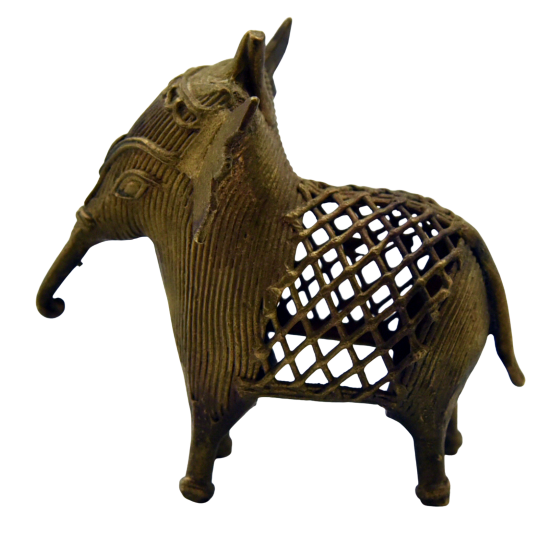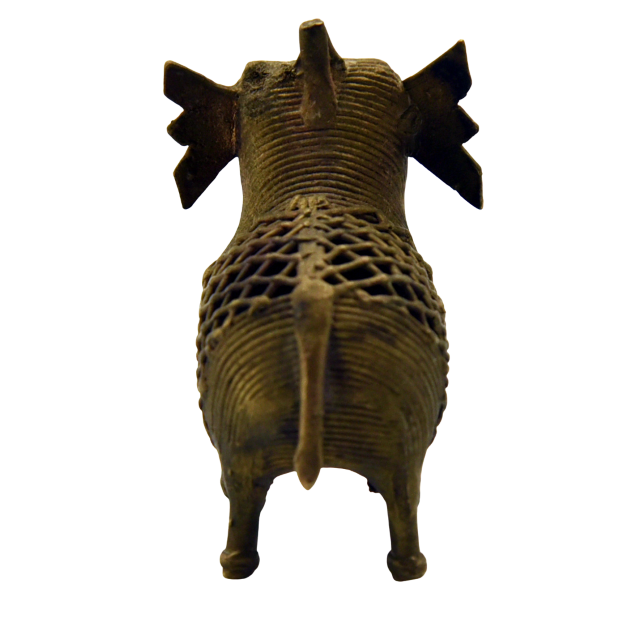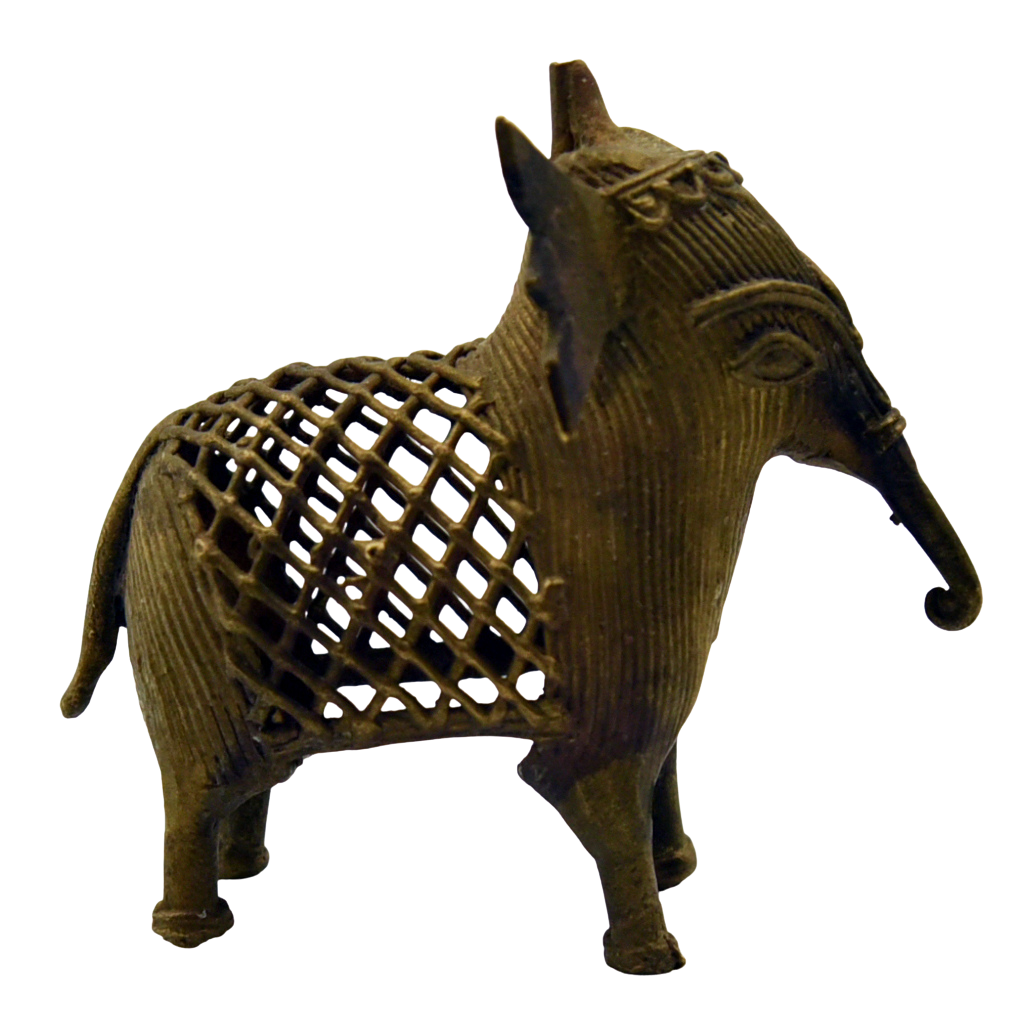 Image 1 of 5
Image 1 of 5

 Image 2 of 5
Image 2 of 5

 Image 3 of 5
Image 3 of 5

 Image 4 of 5
Image 4 of 5

 Image 5 of 5
Image 5 of 5






Dhokra hand cast brass elephant
Date: mid 20th century
Geography: India
Culture: Dhokra Damar tribe
Dimensions: 6cm H x 6.5cm L x 2.5cm W.
Weight 53g
Material: brass
Condition is good for its age, see photos
This is a small brass elephant statue crafted using the traditional Dhokra lost wax casting method. The statue features an antique, rustic finish and is constructed from brass, a non ferrous copper alloy.The design is characterised by the distinctive Dhokra latticework and tribal patterns, which provide an intricate texture and artistic detail across the animal’s body. The elephant is depicted in a stylised form, often with its trunk raised, a gesture believed to bring good luck and positive energy.
Dhokra metal casting craft, an unbroken continuation of the ancient lost wax technique dating back over 4,000 years in the Indian subcontinent. It is one of the oldest forms of metal casting.
Named after the Dhokra Damar tribes (metal smiths) primarily from regions like West Bengal, Chhattisgarh, and Odisha, this tribal art form is characterised by its raw simplicity, powerful forms, and intricate, often perforated, motifs. Each piece is unique because the clay mould is broken to retrieve the final brass object, meaning the mould is lost.
Date: mid 20th century
Geography: India
Culture: Dhokra Damar tribe
Dimensions: 6cm H x 6.5cm L x 2.5cm W.
Weight 53g
Material: brass
Condition is good for its age, see photos
This is a small brass elephant statue crafted using the traditional Dhokra lost wax casting method. The statue features an antique, rustic finish and is constructed from brass, a non ferrous copper alloy.The design is characterised by the distinctive Dhokra latticework and tribal patterns, which provide an intricate texture and artistic detail across the animal’s body. The elephant is depicted in a stylised form, often with its trunk raised, a gesture believed to bring good luck and positive energy.
Dhokra metal casting craft, an unbroken continuation of the ancient lost wax technique dating back over 4,000 years in the Indian subcontinent. It is one of the oldest forms of metal casting.
Named after the Dhokra Damar tribes (metal smiths) primarily from regions like West Bengal, Chhattisgarh, and Odisha, this tribal art form is characterised by its raw simplicity, powerful forms, and intricate, often perforated, motifs. Each piece is unique because the clay mould is broken to retrieve the final brass object, meaning the mould is lost.

